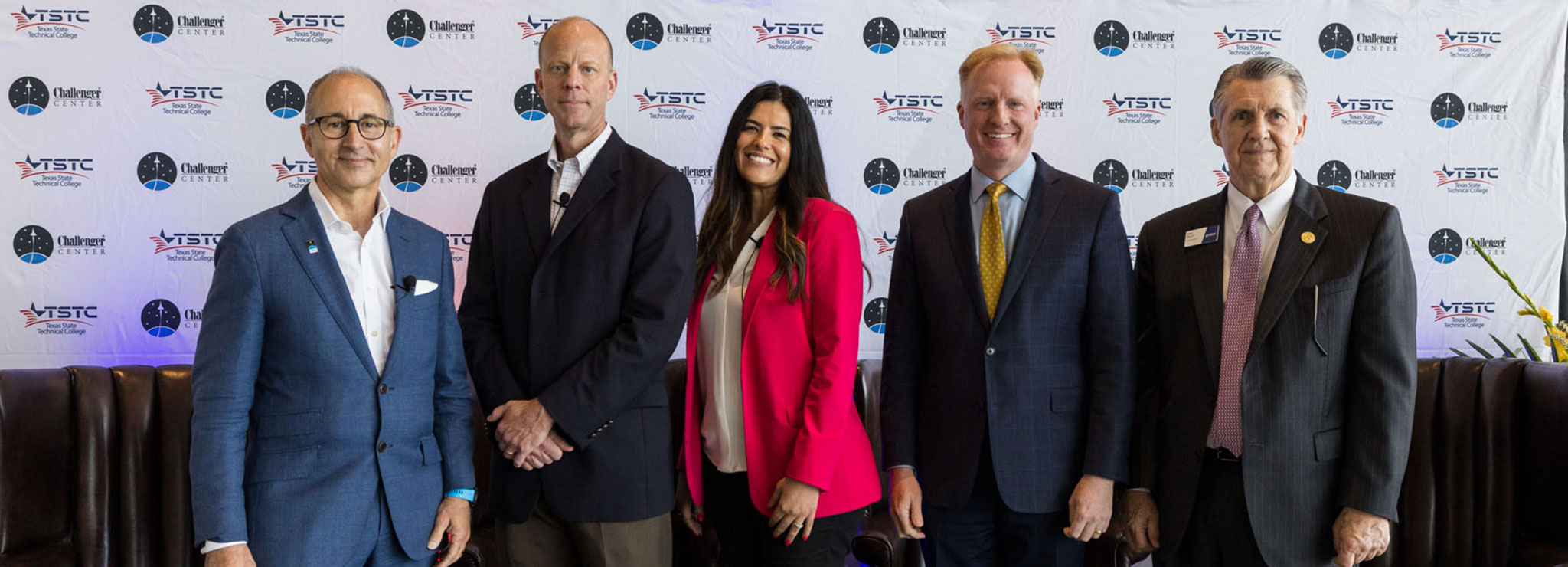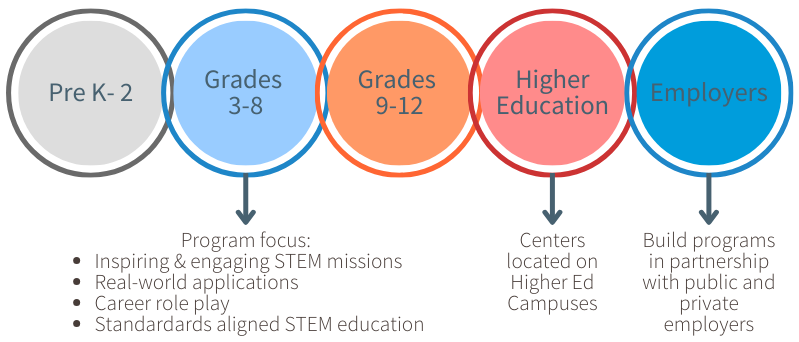Blogs | 11.8.2023
From Cradle to Career: Building the STEM Workforce of the Future

According to the U.S. Department of Labor, the STEM workforce is projected to grow by nearly 11% by 2031, which is more than twice as fast as all occupations. Today’s students are that future STEM work. They are the individuals who will make the next big discoveries, solve the next great challenges, and make the world a better place. That’s why ensuring students have access to a strong STEM education early on and showing them all the incredible STEM career possibilities is so critical. But how do we do this? Who owns this grand responsibility?
From cradle to career, it takes an entire community to inspire the next generation and build the STEM workforce of the future.
Discussing the STEM Workforce of Tomorrow
I hosted a panel discussion with our partners at Texas State Technical College (TSTC) in Waco, Texas, to discuss this concept and share how a community that needs and wants a robust STEM-enabled workforce comes together to ensure its reality.
TSTC is home to two Challenger Learning Centers (Waco and Harlingen). These Challenger Learning Centers serve as the connection point for all the key players working to build the STEM pipeline. TSTC brings middle school students to its campuses for an amazing STEM experience at the Challenger Learning Center, and they introduce the students to TSTC’s certificate and degree programs. Then, TSTC continues the relationship with these students, providing affordable education in high-demand fields. Unlike most colleges, TSTC has a 100% job placement rate, meaning every graduate gets a job. Many of those jobs are with local employers like L3 Harris that directly partner with TSTC to ensure students get the training they need to perform well. This is true cradle-to-career workforce development.
Michael Reeser, Chancellor & CEO of Texas State Technical College and Challenger Center Board Member welcomed us for the important discussion. Our panelists represented K12, higher ed, and industry, which in the case of Waco was aerospace. Panelists included Dr. Harrison Keller, Commissioner of Higher Education, State of Texas; Dr. Chris Allen, Superintendent of Schools, Midway Independent School District; and Sara Tatsch, Vice President & General Manager, Modernization and Modification Group (MMG), L3Harris Technologies, each of whom shared their important perspectives.
Throughout the discussion, we discussed the critical pieces to building a pipeline:
- The importance of meeting students early on and not waiting until middle and high school.
- Providing access to hands-on experiences that demonstrate real-world applications of STEM.
- Exposing students to local employers and higher education so they know what is out there and what’s possible.
“So many students, because of cultural and social factors, are intimidated by STEM. Part of what happens in the Challenger Learning Center is that they develop a sense of efficacy. They go into these environments, and they struggle, and that productive struggle causes them to develop a sense of grit that allows them to learn to overcome resistance to solving challenges. ”
– Dr. Chris Allen, Superintendent of Schools, Midway Independent School District
We shared the importance of inspiration and mentorship, and how showing students professionals who look like them, sound like them, and come from the same communities as them, gives those students a sense of belonging and the ability to see themselves in those careers.
“By mentoring me and pushing me, that was where I was able to see that there were opportunities that were right in front of me, if only, I dared to dream.”
– Sara Tatsch, Vice President & General Manager, Modernization and Modification Group (MMG), L3Harris Technologies
A critical component to finding success in creating a robust STEM pipeline is teamwork – just like we teach our students – among all stakeholders. We discussed the strategies for how this can be achieved and the benefits of this cross-collaboration.
“We’ve learned a lot across different initiatives for how to achieve impact at scale. The real key to it is partnerships . . . We have to think about how we work through networks of universities, community colleges, technical colleges, and school districts all working together.”
– Dr. Harrison Keller, Commissioner of Higher Education, State of Texas
Partnering with organizations like TSTC and showing the importance of connecting K-12 to higher ed to industry, is a small step in our work to fill the STEM pipeline.
Challenger Center’s Approach to Building Community Partnerships
For the past 37 years, Challenge Center has worked alongside countless communities to bring STEM education to life at our Challenger Learning Centers. These community partners see the bigger picture and think broadly about their workforce development efforts. Our partners don’t see the workforce pipeline as something that starts with students in high school. Together with Challenger Center, they are investing in their workforce from pre-kindergarten forward, ensuring that exposure to STEM and career exploration opportunities are present from cradle to career.

